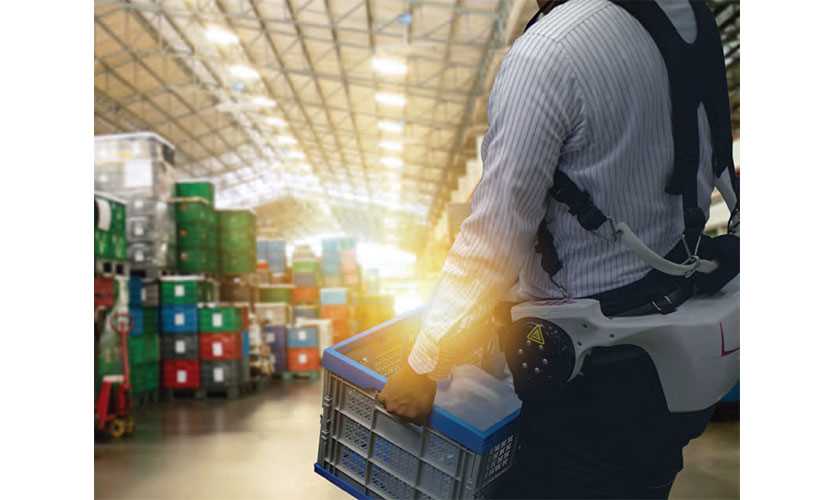Wearables track, assist older workforce
- March 31, 2025
- Posted by: Web workers
- Category: Workers Comp

Employers are seeking creative technological solutions to deal with the challenge presented by a surge of aging employees in the workforce.
Wearable technologies ranging from exoskeletons to sensors that record lifting movements or blood pressure are increasingly being used to help aging employees perform their jobs safely, experts say.
Medical costs for workers comp claims for those 65 years and older are roughly a quarter higher than claim costs for all workers, and older workers also have a higher proportion of injuries from falls, slips and trips, according to data from Boca Raton, Florida-based National Council on Compensation Insurance Inc.
Employees aged 65 and older tripled in the workforce between 1988 and 2018, and their numbers are projected to continue to grow over the next decade, according to the U.S. Bureau of Labor Statistics.
“The workforce is getting older, people are working longer, and employers are … facing challenges in planning for their workforce and their future,” said David Schatsky, managing director in the New York City office of Deloitte LLP.
Telematics and wearables are becoming more relevant because of employers’ efforts to create more age-friendly work environments and because of the significance of the impact of aging revealed in Aon PLC’s claims data, said Joe Galusha, group managing director and U.S. leader of Aon Global Risk Consulting in Southfield, Michigan.
“We identified that workers 45 and older had an average cost of claim that was 73% higher than their younger counterparts,” he said.
Lost-time claims tended to be nearly two weeks longer on average compared with younger workers and litigation rates were 35% higher, he said.
Many wearables can give immediate feedback on an individual’s body positioning and forces that can help that employee immediately modify lifting, twisting or bending behaviors, which can be particularly helpful for workers as they age, said Bill Spiers, vice president and risk control services practice leader for Kansas City, Missouri-based Lockton Cos. LLC.
“Some (wearables) we see offer great biometric feedback, particularly for an older employee,” said Matt Zender, senior vice president of workers compensation strategy for New York City-based AmTrust Financial Services Inc. Devices can be used to monitor heart rates, stress levels and provide indicators of overexertion, he said.
Woody Dwyer, second vice president of workers compensation with Hartford, Connecticut-based Travelers Cos. Inc., said that as workers age, they develop sarcopenia, which is the progressive loss of skeletal muscle mass due to the aging process, according to Rochester, Minnesota-based Mayo Clinic.
One such device Travelers demonstrated was a rechargeable, cellphone-sized sensor that employees can strap onto their bodies at the beginning of a shift. The device then collects the worker’s movement, vibrates to alert workers when the forces they are using to lift are excessive or if they are performing unsafe movements like swinging or twisting, and offers a rating score at the end of a shift. This score can show supervisors who worked safely or who needs extra coaching.
“These sensors could potentially be used to understand the risk of a job and how to mitigate that for the aging workforce,” said Mr. Dwyer.
Other wearables, such as exoskeletons, do not collect information, but can offset weight during a manual pickup or hold a worker’s arms overhead for tasks such as installing overhead electrical wiring.
“One of the key things when we talk about items that assist a worker is that they’re really there to assist, not amplify,” said Christopher Hayes, risk control second vice president of transportation services at Travelers. “Technology that is wearable … can assist with the task, but it doesn’t replace a risk management system that focuses on the employee.”
Costs for these technologies vary widely, said Mr. Dwyer. Non-data driven devices like exoskeletons may cost $5,000 to $10,000 per unit while data-collecting wearables will have a per-device cost as well as a monthly data fee, he said.
“It’s easy for employers to identify that their older workers are very often their most valuable workers — many times they’ve been with (the company) the longest and have a wealth of experience,” said Mr. Zender. “It’s harder to identify the cost of the devices and the risk of potential injury.”
The companies creating these technologies are still trying to prove the benefits they deliver, said Mr. Schatsky, which is one reason why companies in more dangerous fields where “the stakes are rather higher” are the earliest adopters, he said.
The value of workers aged 45 and up has never been greater than today, said Mr. Spiers.
“Their skills, knowledge and experience, when you lose them from an injury, it really hurts your production,” he said. “As our bodies age … when we’re injured at work, the healing is going to be slower, and we’re going to have other issues (like comorbidities) that affect that. We’re trying to protect that group of workers.”
Gloria Gonzalez contributed to this report.



